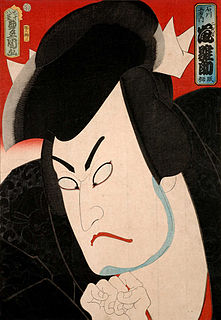 W
WHatano Hideharu was the eldest son of Hatano Harumichi and the head of Hatano clan.
 W
WThe Twenty-Six Martyrs of Japan were a group of Catholics who were executed by crucifixion on February 5, 1597, at Nagasaki. Their martyrdom is especially significant in the history of the Catholic Church in Japan.
 W
WIshida Mitsunari was a Japanese samurai and military commander of the late Sengoku period of Japan. He is probably best remembered as the commander of the Western army in the Battle of Sekigahara following the Azuchi–Momoyama period of the 16th century. He is also known by his court title, Jibu-no-shō (治部少輔).
 W
WIshikawa Goemon was a legendary Japanese outlaw hero who stole gold and other valuables to give to the poor. He and his son were boiled alive in public after their failed assassination attempt on the Sengoku period warlord Toyotomi Hideyoshi. His legend lives on in contemporary Japanese popular culture, often giving him greatly exaggerated ninja skills.
 W
WKonishi Yukinaga was a Kirishitan daimyō under Toyotomi Hideyoshi.
 W
WThe Twenty-Six Martyrs of Japan were a group of Catholics who were executed by crucifixion on February 5, 1597, at Nagasaki. Their martyrdom is especially significant in the history of the Catholic Church in Japan.
 W
WOyamada Nobushige was a Japanese samurai general in the Takeda army under Takeda Shingen, and later under Takeda Katsuyori. He was known as one of the "Twenty-Four Generals of Takeda Shingen". He was also lord of Iwadono Castle, and fought under the Takeda at the battles of Kawanakajima, Mikatagahara, and Nagashino and Tenmokuzan.
Takeda Nobukado was a Japanese samurai warrior of the Sengoku period. He was known as one of the "Twenty-Four Generals of Takeda Shingen".
 W
WTorii Suneemon was an ashigaru who served the Okudaira family, retainer of Tokugawa Ieyasu. He became famous for his bravery and incredible exploit at the siege of Nagashino.